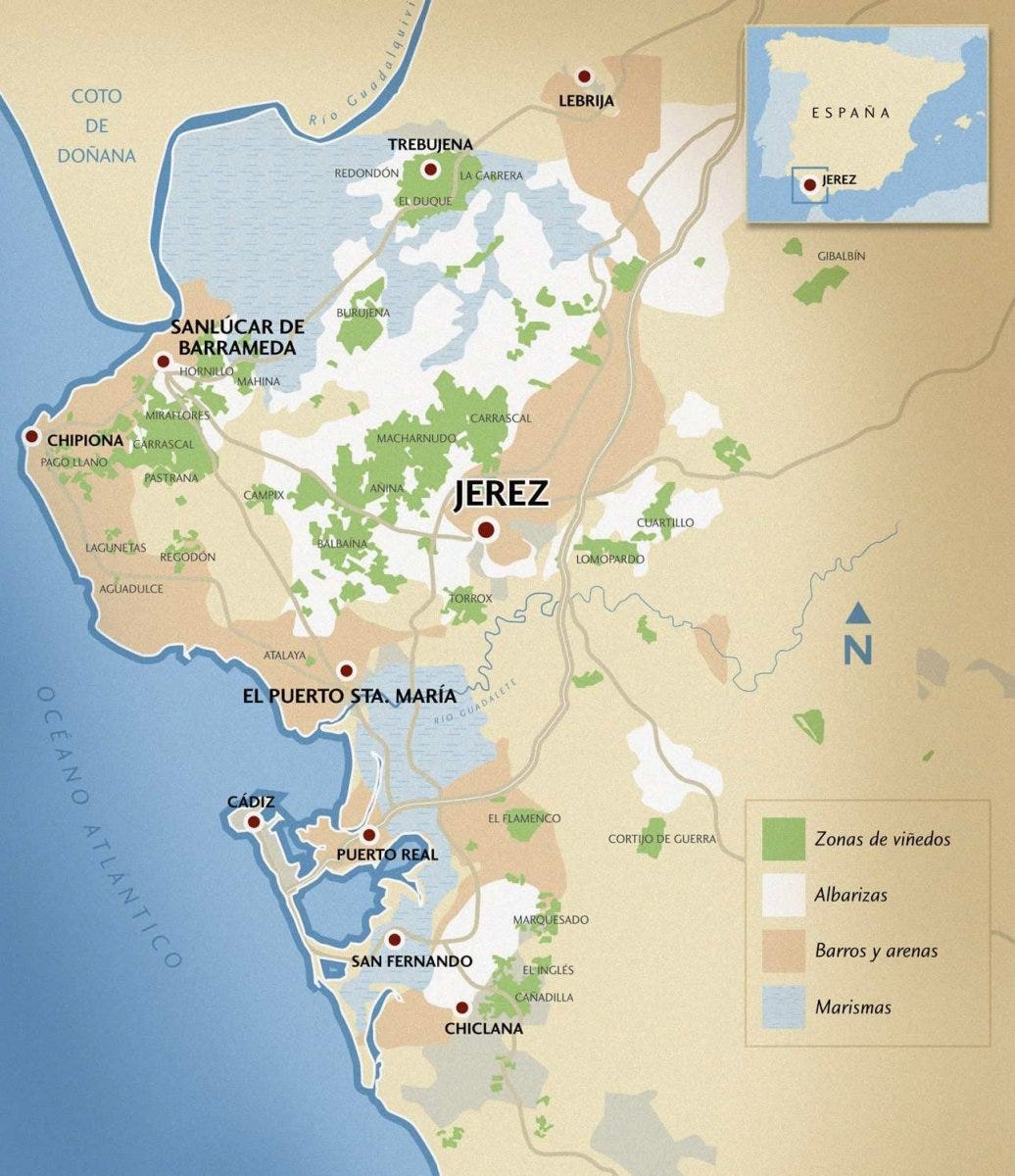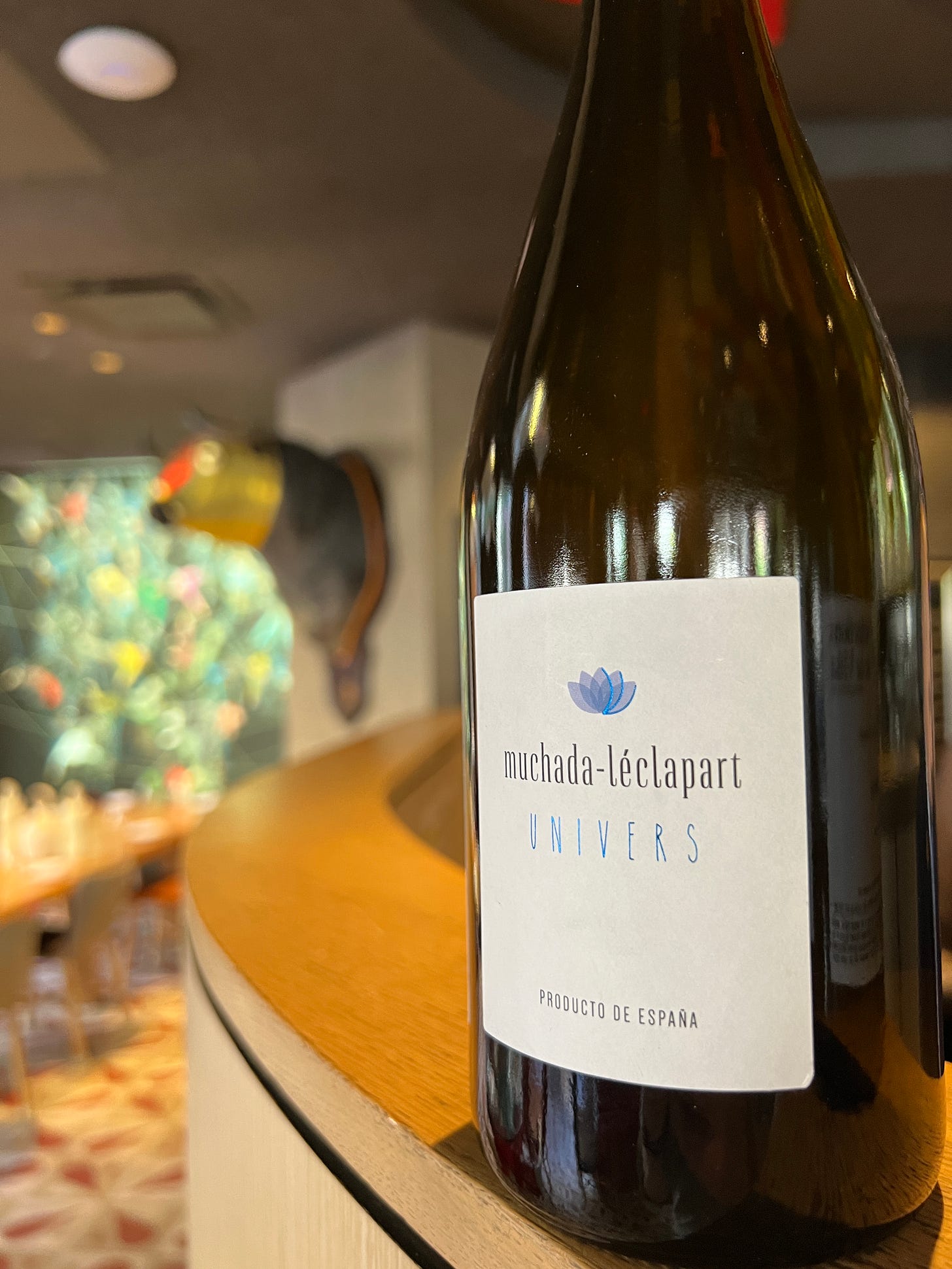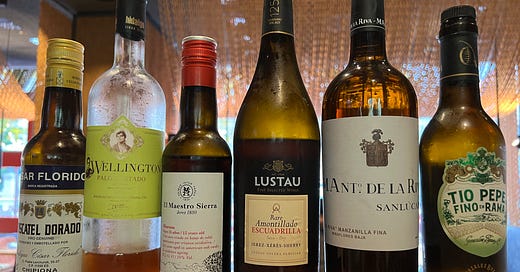It's not my favorite Spanish wine but I still love it
Sherry, the fortified wine from the south of Spain, is complicated but that's why I think it's so amazing
Hello people, today I want to talk about sherry, the very famous, kind of complicated, fortified wine from around the city of Jerez in Andalucía, in the very deep south of Spain. This is where my wife’s family is from, so when I am there in the summertime I drink a lot of sherry. I don’t always drink it the rest of the year, but this week is a very special time for the lovers of sherry…it is International Sherry Week, which is celebrated all around the world and at our restaurants Jaleo and Mercado Little Spain. And sherry is especially good for pairing with tapas and other small bites, so don’t forget many of you have a 15% discount at Mercado Little Spain’s shop to get some delicious things for pairing.
Sherry can be many things to people, but it’s most important to the Andalucians who make it and drink it. It has a very old history, maybe even dating back 3000 years, and has always been famous for its ability to travel great distances…back in the earliest days the wines were transported all across the Mediterranean and were especially popular in Rome! This is what fortification allows, it means that you are adding a neutral alcohol to the wine to make sure it doesn’t get spoiled, which means it can travel far distances.

There are many different kinds of sherry (below I’ll tell you about them), but the most interesting and most important pieces are that it is aged two different ways, which are both different than almost every other wine in the world. One is "biological", which means that the wine sits under a layer of yeast called the flor (flower). The other way is “oxidative” which means that they are exposed to oxygen, which is usually something that winemakers would never, ever do to their beautiful wines. But for some sherries it’s part of their DNA to go through this process, to give them a nutty, caramelized flavor.
The most common grape for the dry sherries is called Palomino, while the sweet sherries are made from Pedro Ximénez (PX) or Moscatel. The grapes are important but the soil itself is almost more important…it is a special kind of bright white chalky limestone called Albariza that is very good at absorbing moisture and reflecting sunlight, which is very important in the hot south of Spain.
Here are the kinds of sherries…when I am in southern Spain with my family we are drinking mostly Fino and Manzanilla, but I do love drinking the darker sherries when I am eating some dishes.
And one thing that Americans might not know is that most sherry is actually drunk as a basic cocktail mixed with Sprite or other lemon soda…that’s a drink we call Rebujito. It’s very very popular in the south of Spain, and I think it could even be a popular one in the summertime in the US too, but maybe we can talk about that again in June (or you can try them at Mercado Little Spain this week!)
Fino: These are the lightest sherries, dry, nutty, and a bit salty like the ocean. They are aged underneath the layer of flor, and are perfect with salty snacks and tapas…think olives and anchovies (or better yet, these anchovy stuffed olives)
Manzanilla: A type of Fino, only made around the coastal town of Sanlúcar de Barrameda. Being close to the ocean makes Manzanilla bit more salty than other Finos, with nice green apple flavors. I love it with with seafood…raw oysters or clams or even these incredible tinned Cockles with a glass of Manzanilla will bring you right to the Atlantic coast.
Amontillado: Amontillado is aged under the flor for at least 3 years and is also exposed to oxygen, giving it a nutty, savory, caramelized flavor…it’s a perfect pairing for the most famous southern Spanish soup, Gazpacho (you should make my wife’s recipe!).
Palo Cortado: Palo Cortados are a very mysterious sherry…the protective layer of yeast that covers an Amontillado disappears and no one really knows why. They are rich and salty…I like to drink it with nuts (Albert Adrià’s aperitivo-flavored Marcona almonds are the in the world) and cheeses, like this Andalucian Queso Payoyo.
Oloroso: Oloroso is one of the oxidative wines, oxygen which is usually a sin for winemakers. It gives the sherry a deep, nutty, rich flavor. Oloroso is amazing with blue cheese (like my favorite Cabrales) and meat…especially jamón and oxtail.
Cream / PX (Pedro Ximénez): These might be the sherries that you think of when you think of sherry, they are sweet and a little thick, beautiful and rich, and are perfect with a nice blue cheese like Valdeón.
A final thing to tell you is that there are some new exciting wines being made in the same area out of the same grapes…but they are not fortified, they are just really delicious white wines! It allows you to truly taste the terroir of Andalucía. Some of my favorites are made by Muchada-Léclapart, Cota 45, and Barbadillo.

If you like the sound of sherry, you should try it…it’s new and interesting and I think you will like it as something to learn about. Because what is life supposed to be if not about learning…?






Always interesting and very informative! Thank you!
Thank you Jose for your explanation about the different sherries. I always loved Fino and also Amontillado. In my childhood back in the 50's in Asturias, Spain my mother used to make me drink a little glass of vino Sanson ( maybe similar to Pedro Ximenez) every day. Back then parents though that if you were skinny you were not healthy and the vino dulce was going to help hahaha. Now I live in NY state and I make sure not to give my grandchildren vino Sanson or they put me in jail.